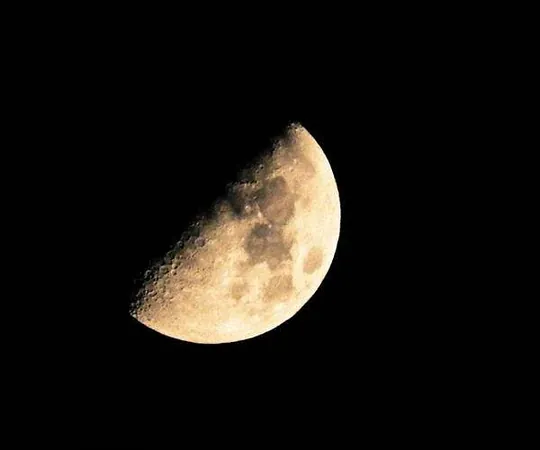
NASA's Lunar Mission: Using Moonlight to Revolutionize Earth Monitoring
2025-04-14
Author: Yu
NASA's Groundbreaking Nighttime Flights
In a daring venture, NASA's ER-2 aircraft soared beneath a radiant, waxing Moon in March 2025, transforming into a remarkable lunar observatory. Launched from the Armstrong Flight Research Center in Edwards, California, these nighttime missions were part of the innovative Airborne Lunar Spectral Irradiance (air-LUSI) initiative.
Harnessing Moonlight for Satellite Calibration
Equipped with a state-of-the-art spectroradiometer, the air-LUSI setup meticulously captured moonlight across various wavelengths. By analyzing how the Sun's light reflects off the Moon’s surface, scientists are setting new standards for calibrating Earth-observing satellites with unmatched precision.
"The Moon serves as an absolute reference, providing an ideal benchmark for satellites to accurately monitor Earth's processes," explained Kevin Turpie, the air-LUSI principal investigator at NASA's Goddard Space Flight Center. With its steady brightness, the Moon allows for precise alignment of satellite sensors that track critical changes in climate, ecosystems, and ocean health.
Soaring Above the Atmosphere for Clarity
Flying at an impressive altitude of 70,000 feet, the ER-2 provided an extraordinary perspective that soared above 95% of the atmosphere. This high-flying position ensures that measurements are subjected to minimal atmospheric distortion, yielding data of exceptional clarity.
Revolutionizing Earth Science with Scintillating Data
"The air-LUSI's lunar measurements have reached heights of accuracy never seen before," stated Kelsey Bisson, a NASA program scientist backing the mission. This data not only enhances our understanding of Earth’s weather patterns but also offers a groundbreaking method to calibrate satellites, paving the way for significant cost savings in future missions.
Collaborative Innovation Across Borders
This revolutionary project is a powerful collaboration between NASA, the National Institute of Standards and Technology (NIST), the U.S. Geological Survey, the University of Maryland Baltimore County, and Canada’s McMaster University. The latter played a crucial role, developing key hardware such as the Autonomous Robotic Telescope Mount Instrument System and the High-Altitude Aircraft Mounted Robotic (HAAMR) telescope mount, enabling precise lunar tracking during flights.
Andrew Gadsden, an associate professor at McMaster and co-investigator, noted, "This collective effort between American and Canadian teams exemplifies the exciting possibilities when engineering and science unite." The successful deployment of the HAAMR is not just a technological milestone; it signifies the dawn of a new era in airborne lunar observation.
Setting New Standards for Earth Observation
With these unprecedented measurements of lunar light, as described by co-investigator John Woodward IV, NASA is taking crucial steps towards enhancing Earth observation systems. The air-LUSI mission promises not only more accurate data but also a transformative approach to satellite calibration, heralding a new chapter in our understanding of the planet.


 Brasil (PT)
Brasil (PT)
 Canada (EN)
Canada (EN)
 Chile (ES)
Chile (ES)
 Česko (CS)
Česko (CS)
 대한민국 (KO)
대한민국 (KO)
 España (ES)
España (ES)
 France (FR)
France (FR)
 Hong Kong (EN)
Hong Kong (EN)
 Italia (IT)
Italia (IT)
 日本 (JA)
日本 (JA)
 Magyarország (HU)
Magyarország (HU)
 Norge (NO)
Norge (NO)
 Polska (PL)
Polska (PL)
 Schweiz (DE)
Schweiz (DE)
 Singapore (EN)
Singapore (EN)
 Sverige (SV)
Sverige (SV)
 Suomi (FI)
Suomi (FI)
 Türkiye (TR)
Türkiye (TR)
 الإمارات العربية المتحدة (AR)
الإمارات العربية المتحدة (AR)